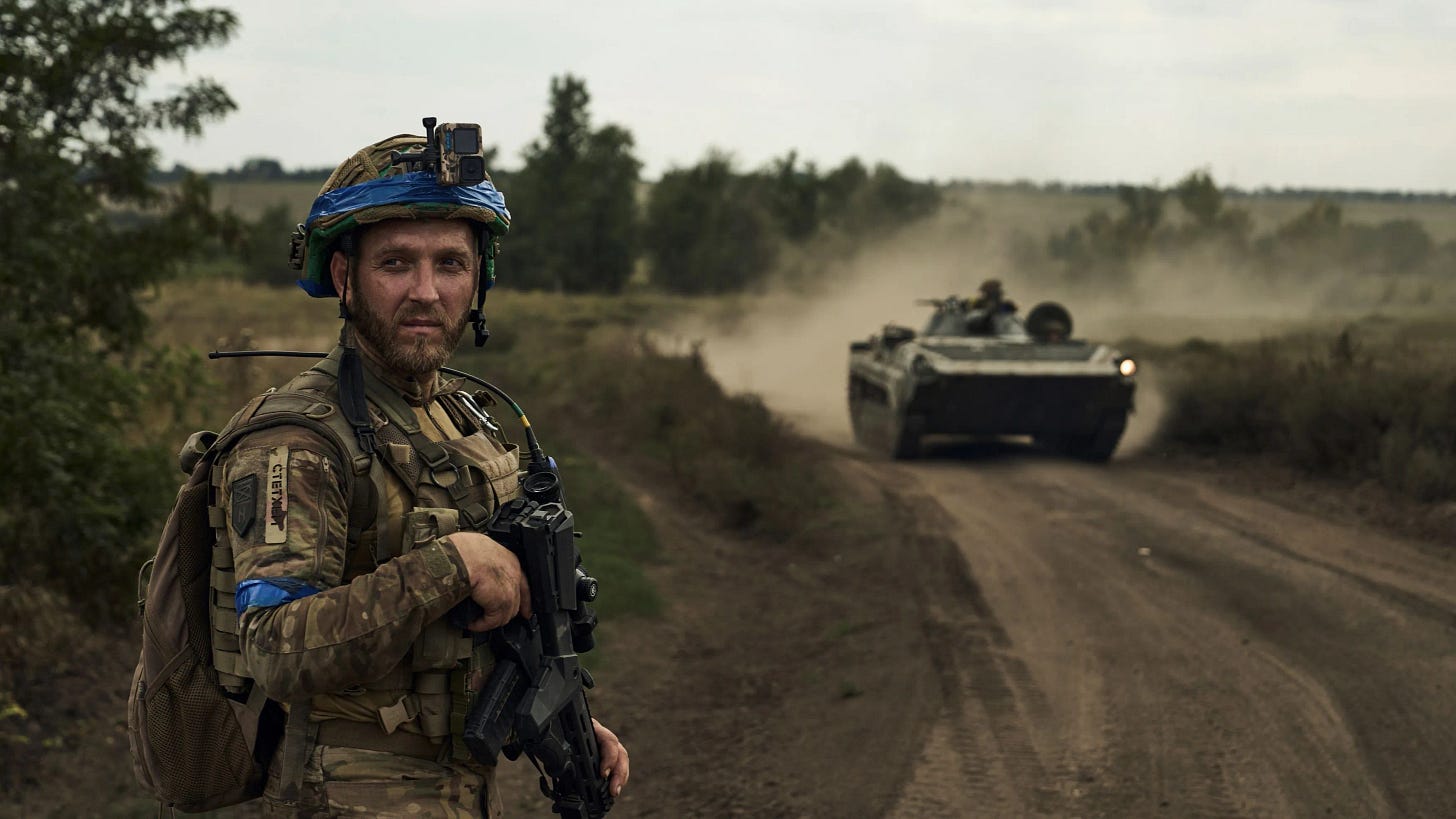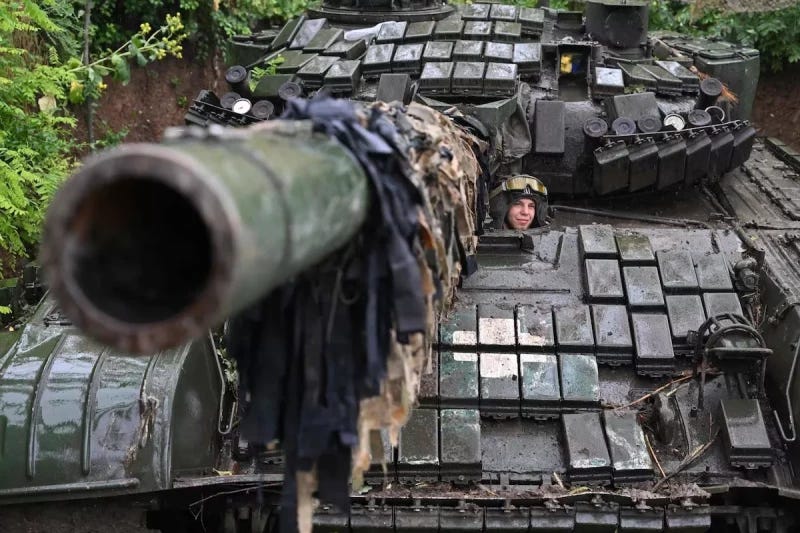In A State Of Paralysis: Ukraine Risks Descending Into A Frozen Conflict
The much-anticipated Ukrainian counteroffensive failed abysmally. Now, Western allies need to discuss what steps they will take to steer negotiations towards a ceasefire and a peace resolution.
It’s fascinating how quickly the discourse around Ukraine’s counteroffensive shifted. A few months ago, as fresh, Western-trained troops began their trudge through miles of Russian defences, most Western commentators seemed assured of victory. Ukraine would carve through Russian defensive lines quickly and decisively, routing Putin’s army back to Crimea, they claimed. And anyone who voiced doubt, just as I did, was quickly ostracised as pariahs. Labelled as nothing more than Kremlin stooges, we were omitted from the conversation entirely.
What a difference five months makes. Within that time, Ukraine, despite all of the financial and military aid Western allies lavished it with, has only advanced 370KM2, less than half of what Russia captured in all of 2023, a far cry from the expectations at the beginning of the campaign when some senior US military officials even seemed confident Ukraine could reach Crimea by August. In total, Ukraine recaptured 14 villages in Donetsk and Zaporizhzhia oblasts, with a total pre-war population of around 5,000. The newly liberated territory amounts to little more than 0.4% of Ukraine’s total territory, leaving Russia with control of around 17.5%.
By all metrics, this is an abject failure. Before the counteroffensive began, Ukraine and its allies outlined that the main objective was to sever the Russian land-bridge connecting the Donbas with Crimea, which the Kremlin has used as a vital artery for supplies. By pushing through to Berdyansk, a city on Ukraine’s southern coast, it was hoped that not only would Ukraine be able to reverse Russian gains on two fronts, but that they could easily threaten supply hubs in Crimea, perhaps destabilising Russia’s entire military operation.
Well, suffice to say, Ukraine is still struggling to liberate Polohy, a settlement which lies just a few miles from the front lines. Berydansk, in comparison, looks like a pipe-dream.
The Russian military prepared accordingly. Using the time provided by the spring stalemate, Moscow shifted troops, dug fresh fortifications and scattered land mines across the relatively flat fields of Ukraine’s south. When Ukraine began its attack, it faced a prepared defence of the sort not seen in Europe since World War II.
Though Russia has sustained large casualties in its invasion, the numbers have not deterred Putin, who, with access to a massive array of human and economic resources, views his soldiers as nothing more than simple pawns in his game of chess. The human and economic consequences do not factor into his calculations. It does for the West, however.
Support for arming Ukraine has already waned over the months, heightened by higher energy costs and grain prices, which are mostly being felt by the lower classes at a time when wages have remained stagnant. Future Western support may have to explain why supporting Ukraine in this proxy war justifies a declining standard of living for millions of people, something most politicians seem hesitant to do in the face of reversing public opinion. According to an AP-NORC poll conducted in June, just before the counteroffensive began, support for continued military aid by Democrats had fallen from 71% to 63% while for Republicans it had declined from 53% to 39%. In the UK, similar trends can be observed; support for sending additional aid and military supplies plummeted from 80% in mid-2022 to around 67% a year later.
And this view of the conflict turning into a protracted stalemate isn’t just shared by sceptics of the Washington Consensus; it is even shared by senior figures of the Ukrainian military. Speaking to the Economist in a sobering interview this Wednesday, Ukraine’s Army Commander-in-Chief, Valery Zaluzhny, acknowledged the campaign’s failure. “There will most likely be no deep and beautiful breakthrough,” the commander said. “Just like in the First World War, we have reached the level of technology that puts us into a stalemate.”
Predictions of Russia’s eventual collapse, voiced from the war’s onset, don’t look any closer to manifesting. Despite the severe economic sanctions and diplomatic ostracisation, Russia’s economy continues to perform unabated, even outperforming some Western countries like Italy and Germany, an embarrassing fact for those in Washington DC who had seemed certain that Russia would be driven into bankruptcy.
Putin can also rely on large deposits of natural wealth, energy and manpower to fuel his war machine, a benefit not afforded to Ukraine, which is already suffering from a haemorrhaging of men and an economy entirely dependent on the US continuing to be magnanimous.
In order to end the bloodshed, the West needs to collectively agree on a timetable for a negotiated settlement. Let’s face the facts - this counteroffensive was Ukraine’s last chance to make a difference on the battlefield, and they drastically failed. With most economies still in a downturn and the political dominance of the neoliberals and neoconservatives in Western countries quickly fading, Ukraine will struggle to win that level of support again.
With every new day, Russian forces entrench themselves further, creating a ring of fortifications almost impregnable. Unless the Ukrainian men are ready to sacrifice themselves in a pointless meatgrinder, diplomacy seems to be the only solution on how to break this impasse, otherwise we risk repeating the Korean War; a conflict frozen in time, people trapped and lives ruined. Europe cannot afford to allow the conflict to enter a frozen state - they lack the industry to sustain a decade-long campaign.
Even if negotiating with Russia seems like a tough pill to swallow at the moment, Western leaders should at least entertain the idea and keep it on the back-burner for when it eventually rolls around.
The first step will be to re-open communication channels with Russian authorities, which have largely remained dormant since the war’s beginning in February 2022. Once an amicable relationship has been re-established, both sides should then focus on putting into place a ceasefire to stop any more unnecessary bloodshed. Only then can talks about the war’s future begin.
As with all conflicts where neither side holds a favourable advantage, both will have to make harsh concessions, to the ire of their own hardliners. Though the list of grievances is exhaustive, major points of contention include: Crimea’s autonomy, jurisdiction over the Donbas region, how to trial and prosecute war criminals, the financial consequences of rebuilding war-torn areas, and loosening the economic sanctions levied on Russia.
America and its Western allies will have to tread a fine line between upholding and protecting Ukraine’s sovereignty and appeasing the Kremlin’s demands. It won’t be easy - it never is - but, the sooner negotiations are held, the closer Ukraine and its people will reach a sense of peace and stability.




